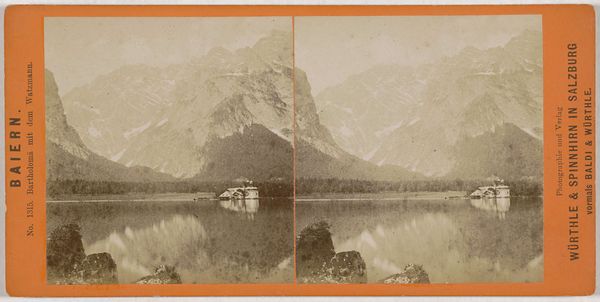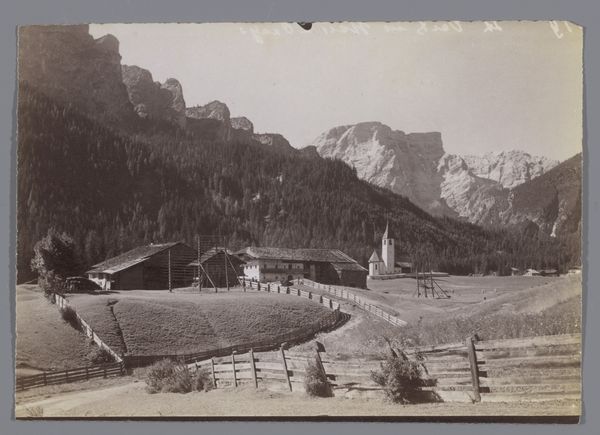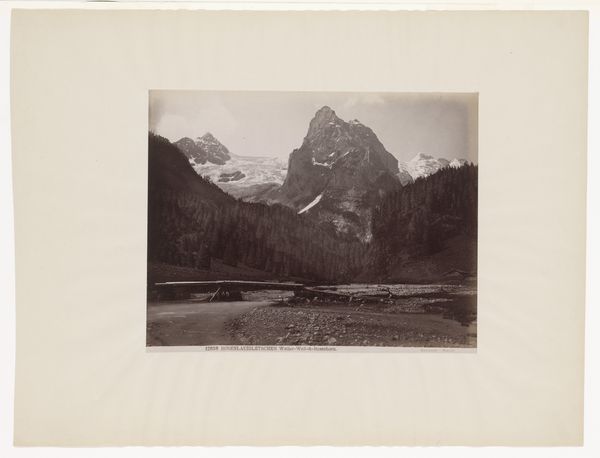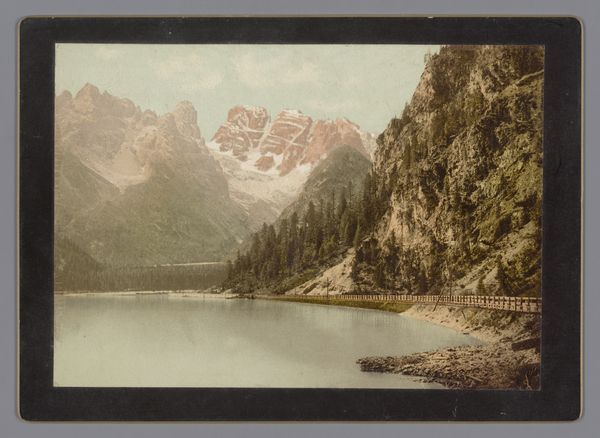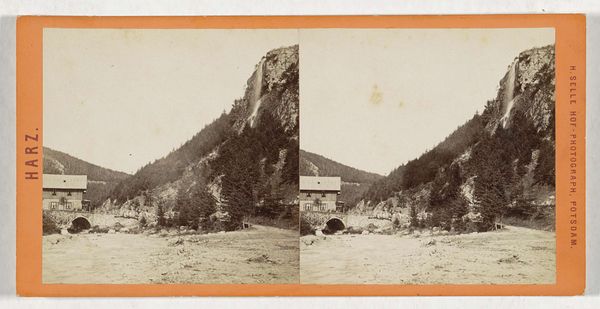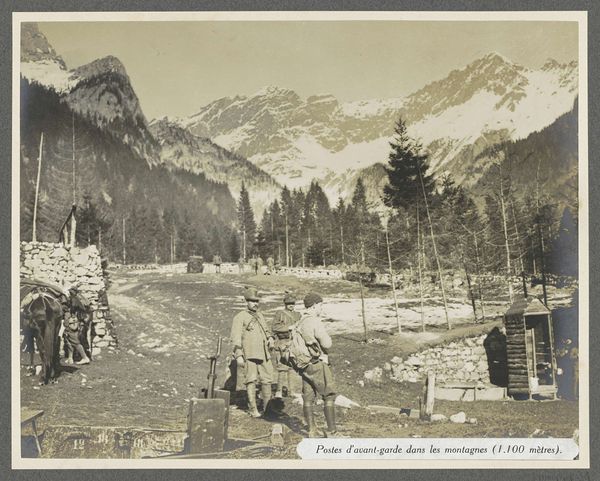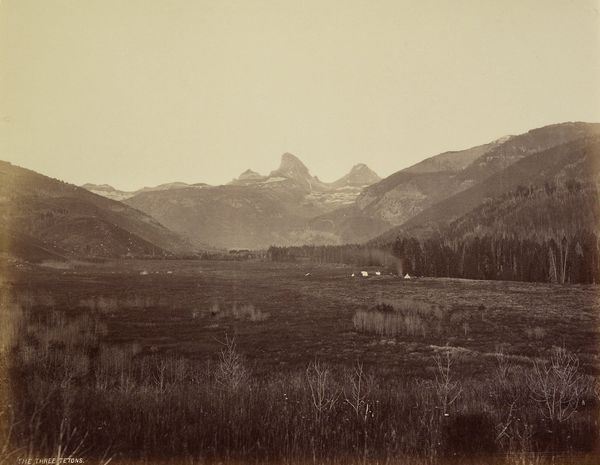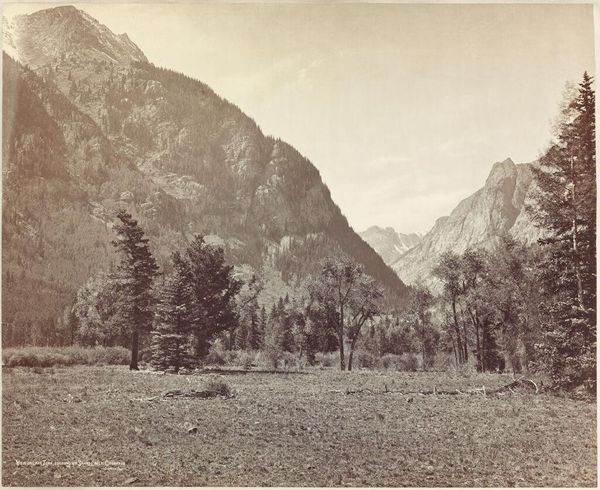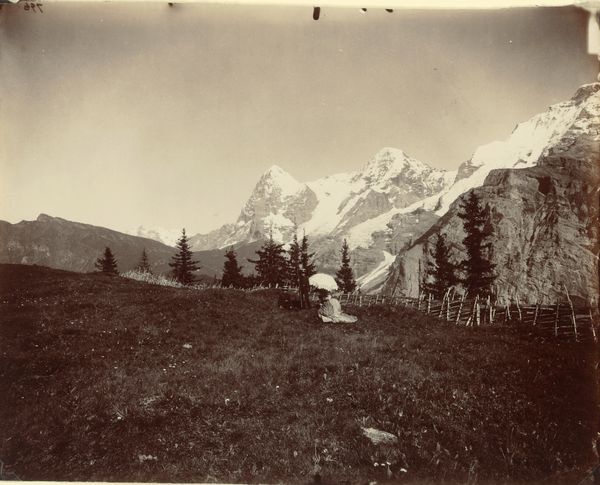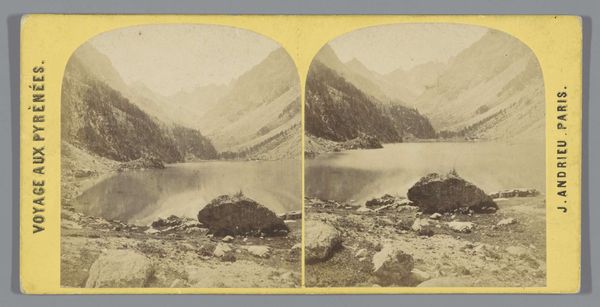
Dimensions: height 85 mm, width 170 mm
Copyright: Rijks Museum: Open Domain
Editor: So, this is "Gezicht op de Monte Cristallo te Veneto," a gelatin-silver print, sometime between 1850 and 1900, by Würthle & Spinnhirn. It’s incredibly serene, almost…austere. The buildings seem so small against the immense mountain backdrop. What do you see when you look at this photograph? Curator: I see a constructed vision of Tyrolean identity. Consider the era – burgeoning tourism and nationalism. This image, in its picturesque framing, participates in the idealization of the landscape, specifically for consumption. Editor: Consumption? Like selling the mountains? Curator: Exactly. This idyllic view of simple buildings nestled beneath imposing mountains speaks to ideas of purity, authenticity, and a harmonious relationship with nature. This deliberately avoids the socio-economic realities, such as labor exploitation. This imagined harmony papers over any tensions or conflicts, framing Tyrol as a place of escape and retreat for an emerging middle class, largely excluding local perspectives and issues. What narratives are omitted? Editor: I hadn't considered the image as something that obscures as much as it reveals. So the framing… Curator: The framing isn’t neutral. It reinforces power dynamics. Note the position of the buildings compared to the mountains; this deliberate composition portrays a specific kind of relationship between humanity and the environment, influencing the viewer. We need to ask whose stories are centered, and whose are marginalized? Editor: It's amazing how a landscape photograph can be so much more than just a pretty view. Curator: Precisely! Examining art within its socio-political framework reveals the complex narratives it both embodies and promotes.
Comments
No comments
Be the first to comment and join the conversation on the ultimate creative platform.
